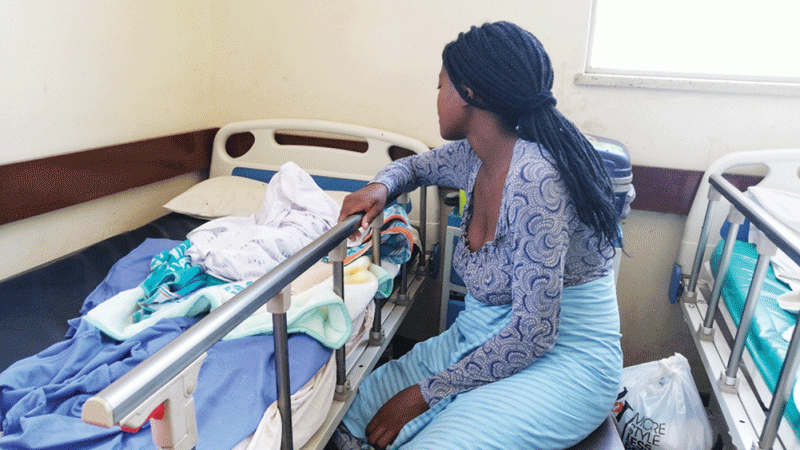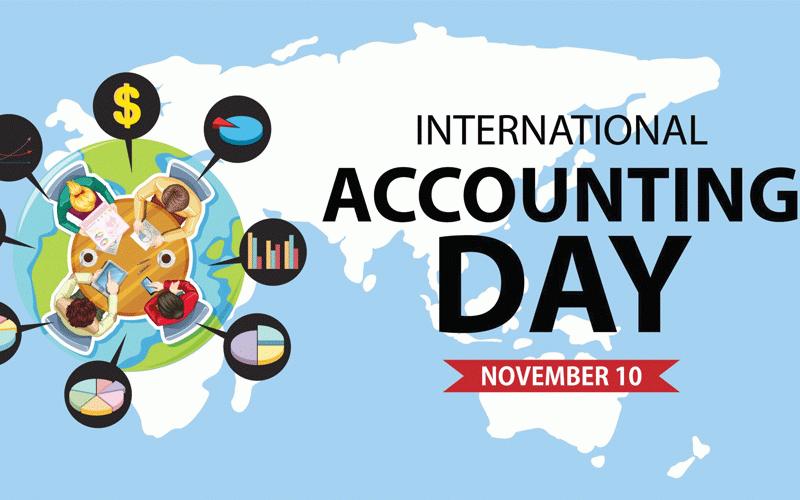
UNIVERSAL access to healthcare is not just a moral imperative, it is a cornerstone for social equity and economic development.
For Zimbabwe, achieving this goal would enhance productivity, reduce poverty, and create a healthier, more resilient workforce to drive national progress.
Yet, despite progress in some areas, Zimbabwe’s healthcare system still falls short of providing equitable and efficient services, lagging regional and global benchmarks. By addressing systemic challenges and adopting innovative financial solutions, Zimbabwe can make meaningful strides toward universal healthcare.
Healthcare access status
Zimbabwe’s healthcare system faces significant challenges in availability, affordability, accessibility, and quality. Key metrics highlight these gaps when compared to regional and global averages:
Health workforce density
Zimbabwe faces a critical shortage of healthcare professionals, with only 0,16 physicians per 1 000 people, compared to a global average of 1,56 and a regional average of 0,9 in Sub-Saharan Africa (Source: World Health Organisation, 2024). This disparity highlights a severe gap in human resources for health, which undermines the delivery of quality medical care across the country.
The shortage is especially pronounced in rural areas, where access to healthcare professionals is limited, leaving communities vulnerable to untreated illnesses and preventable deaths. Addressing this gap is a pressing priority for Zimbabwe’s health sector.
- Beware of fake nurse aide certificates, says ZRCS
- Beware of fake nurse aide certificates, says ZRCS
- Red Cross vaccination go into overdrive
- . . .the elderly struggle to access healthcare, bare basics
Keep Reading
Hospital beds
The availability of hospital beds in Zimbabwe is another critical indicator of the strain on the healthcare system. With only 1,7 hospital beds per 1 000 people, Zimbabwe falls short of the global average of 2,9 beds per 1 000 people (Source: Zimbabwe Ministry of Health and Child Care, 2023).
This limited capacity impacts the country’s ability to manage in-patient care, especially during health emergencies such as disease outbreaks or natural disasters. Overcrowded facilities often lead to delays in treatment, diminished quality of care, and an increased burden on healthcare workers.
Life expectancy
Life expectancy in Zimbabwe is an important measure of the population’s overall health and well-being. At 61 years, the average life expectancy in Zimbabwe is 11 years lower than the global average of 72 years (Source: World Bank, 2024).
This figure reflects the cumulative effects of factors such as high mortality rates, poor healthcare access, and the prevalence of communicable diseases. Improvements in healthcare infrastructure, disease prevention, and nutrition are essential to closing this life expectancy gap and ensuring that Zimbabweans live longer, healthier lives.
Maternal mortality ratio
Zimbabwe’s maternal mortality ratio remains alarmingly high at 462 deaths per
100 000 live births, more than double the global average of 211 (Source: Unicef, 2023). These deaths are often preventable and stem from complications such as hemorrhage, infections, and lack of access to skilled birth attendants.
This statistic underscores the urgent need to strengthen maternal health services, particularly in rural areas where healthcare facilities are under-resourced and poorly staffed. Investments in prenatal care, skilled delivery services, and emergency obstetric care could significantly reduce maternal deaths.
Infant mortality rate
The country’s infant mortality rate of 35 deaths per 1 000 live births are higher than the global average of 28 deaths per 1 000 live births (Source: DHS, 2024). This metric is a key indicator of a nation’s healthcare system and reflects broader socio-economic conditions.
Many of these deaths result from preventable causes, such as neonatal infections, birth asphyxia, and complications related to premature birth. Strengthening immunisation programmes, improving neonatal care, and ensuring access to trained healthcare providers are crucial steps to reduce infant mortality in Zimbabwe and bring it in line with global benchmarks.
While Zimbabwe achieves commendable performance in measles immunisation coverage, reaching 90% compared to the global average of 85%, the healthcare system overall struggles to meet the needs of its population.
Challenges, root causes
Underfunding of healthcare: Zimbabwe’s healthcare sector receives insufficient funding, with public health expenditure accounting for less than 10 percent of GDP, far below the Abuja Declaration target of 15 percent (Source: African Union, 2024). Limited fiscal space has constrained investments in infrastructure, workforce training, and medical supplies. This underfunding hampers the ability to modernise healthcare facilities and expand access to underserved areas.
Brain drain: The exodus of healthcare professionals remains a critical issue. Zimbabwe loses hundreds of doctors and nurses annually to countries offering better pay and working conditions. According to a 2023 report, over 4 000 healthcare professionals emigrated in the past five years, leaving critical gaps in service delivery (Source: Ministry of Health). This shortage has disproportionately impacted rural areas, where access to skilled providers is already limited.
Rural-urban disparities: Healthcare access in Zimbabwe is heavily skewed toward urban areas. In rural regions, over 50% of the population lives more than five kilometres from the nearest health facility (Source: Zimbabwe National Statistics Agency). Poor road networks and inadequate transportation further exacerbate the issue, limiting the ability of rural populations to seek timely care.
Reliance on out-of-pocket payments: Out-of-pocket expenditure constitutes over 70% of total healthcare costs, making healthcare unaffordable for many Zimbabweans. Families are often forced to forgo essential treatments or resort to informal care providers, perpetuating poor health outcomes. This reliance on direct payments also increases the risk of catastrophic health expenditures, pushing households into poverty (Source: World Bank, 2024).
Limited access to technology and digital tools: The adoption of telemedicine and digital health solutions has been slow, despite their potential to bridge gaps in service delivery. Many rural health facilities lack internet connectivity and digital infrastructure, hindering the rollout of virtual consultations and e-health records. This technological gap restricts innovation and efficiency in healthcare.
Supply chain challenges: Frequent stock-outs of essential medicines, including antibiotics and vaccines, undermine patient trust in public health facilities. Poor procurement planning and logistical inefficiencies contribute to these shortages, disproportionately affecting rural clinics. For instance, over 40 percent of rural clinics reported medicine stock-outs in 2023 (Source: Unicef).
Innovative financial solutions
Mobile health insurance platforms: Zimbabwe can replicate the success of mobile health insurance models in Kenya and Ghana. Platforms such as EcoCash could allow users to enrol, pay premiums, and make claims via mobile phones, expanding coverage to underserved populations. Studies show that mobile insurance can increase health insurance penetration by up to 20% in low-income settings (Source: GSMA, 2024).
Digital payment systems: Expanding digital payment solutions can reduce barriers to healthcare access. Mobile wallets can enable patients to pay for services in installments, improving affordability. During the Covid-19 pandemic, mobile money platforms in Africa processed US$490 billion in transactions, demonstrating their potential to streamline healthcare payments (Source: GSMA, 2023).
Telemedicine expansion: Scaling telemedicine services can significantly improve healthcare access in rural areas. Partnerships with tech companies could support the rollout of virtual consultation platforms, allowing patients to connect with specialists remotely. In Rwanda, telemedicine initiatives have reduced travel costs by 50% for rural patients (Source: WHO, 2023).
Health savings accounts (HSAs): Mobile-linked HSAs can help individuals save specifically for healthcare expenses. Offering tax benefits or matching contributions for account holders would incentivise participation. Similar programmes in India have demonstrated success in promoting financial preparedness for medical needs (Source: Indian Ministry of Health, 2023).
Blockchain for transparent financing: Blockchain technology can improve transparency and accountability in healthcare financing by tracking fund utilisation. Piloting blockchain-based systems for donor funds and government health budgets could reduce corruption and ensure efficient resource allocation.
Public-private partnerships (PPPs): PPPs can mobilise resources and technical expertise for healthcare projects. For example, joint ventures could finance diagnostic centres or establish regional referral hospitals. Kenya’s PPP in renewable energy projects offers a model for healthcare infrastructure development (Source: AfDB, 2024).
Targeted levies for health funding: Zimbabwe could expand targeted health levies, such as taxes on sugary drinks or telecommunications, to generate additional revenue for the healthcare sector. In 2023, these levies contributed over US$50 million to education and infrastructure programmes, demonstrating their viability (Source: Ministry of Finance, Zimbabwe).
Diaspora bonds: Zimbabwe’s diaspora remittances totalled US$1,47 billion in 2023 (Source: RBZ). Issuing diaspora bonds for healthcare infrastructure could tap into this resource pool, financing new clinics and hospitals while offering attractive returns to investors.
Conclusion
Universal healthcare is achievable for Zimbabwe with the right mix of policies, innovations, and financial mechanisms. Addressing systemic inefficiencies and leveraging technology can bridge gaps in access and equity. By implementing these strategies, Zimbabwe can create a resilient healthcare system, fostering social progress and economic growth. With collaboration among stakeholders, universal healthcare can transform from an aspiration into a reality, ensuring no Zimbabwean is left behind.
This article is part of a series aimed at fostering informed discussions on Zimbabwe’s economic policy.
Chikosi, a former director at the World Bank, now serves as an independent director on the boards of prominent local and international companies. With a wealth of experience in global development and corporate governance, he is dedicated to fostering growth, driving sustainable solutions and offering strategic insights into Zimbabwe’s economic challenges and opportunities.











